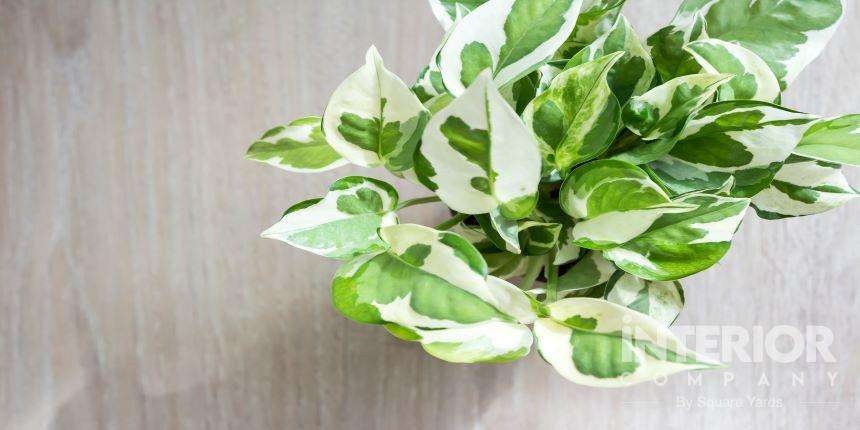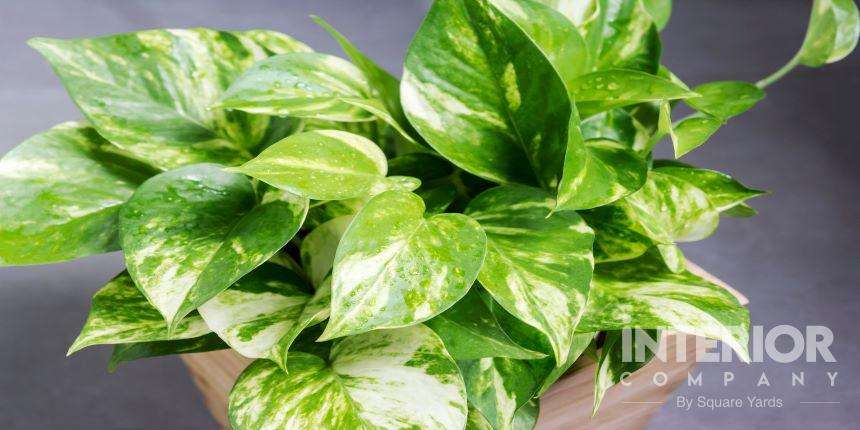- Kitchens
- Design Ideas
- Cities
- Trends
- Guides
- Price Calculators
- Our PortfolioNEW
- More
- Home
- Trends
- Furniture And Decor
- Indoor Plants
- Golden Pothos Ideas Indp
How To Care for the Golden Pothos? Secret Ideas
Pothos also known as Devil’s Ivy can be easily grown in a hanging basket or even as a potted plant for your desk. It’s not as evil as it sounds, it’s quite the opposite. It helps purify your air and is also tolerant to fluorescent lights which makes them one of the popular choices for your office environments. There are many kinds of pathos for you but Golden Pothos being one of the first plants that comes to our mind when talking about Pothos must be Golden Pothos not for any particular reason but for the simplest reason of it being a perfect plant for indoors. So, now the next question that may arise is doesn’t it have any flowers or buds to attract, which I agree to too. But hang in there, Golden Pothos, one of the few plants whose leaves itself is its major usp, their leaves are enough to grab attention of your guests visiting your home, its nothing but just the vibe, the aura that shines out.
Table of Content
A Golden Pothos plant which is also well known as Epipremnum aureum, (don't worry you will not ask you to remember this name) has this heart shaped glossy green leaves with smearing creamy gold. Even though the plant stands low light but if kept in dark for too long, then the leaves might as well lose its variegation. It looks its best in moderate or bright light and because it grows well under the fluorescent lighting, therefore, is considered one of the best options for workplaces.
Pothos: Indoor Plant Care & Growing Guide

Pothos was found in Asian Countries and the Western Pacific Islands. It is quite opposite of the devilish theme that it has to itself because it doesn't have anything so devilish to it. The Golden Pothos plants are generally known for its longevity, as it is one such plant that can sustain for a very long time. Stop thinking too much! You'll be okay and will also be able to handle it well. It’s not rocket science after all.
Willing to have more than just one golden pothos? One of the greatest things about this plant is that they can grow even from its cuttings. You can easily grow many for yourself by simply cutting a hefty piece while keeping the stems and roots in mind. You can then place them in soil and even if you want to grow them in water you can do that as well. As they can grow both in soil and in water.
As mentioned above golden pothos can be grown both in soil and water. But growing this plant is quite easy and to get best of the results you can add some earthworms and a bit of other natural fertilizers with it apart from these they don't need any special treatment separately.
Growing Golden Pothos in water is not that difficult as it sounds. You just need to give it a little bit of love and care. Sowing soil does get unpleasant at times, therefore people prefer growing plants in water rather than soil. To grow this plant in water you just require a jar- a normal jar is all you need, no special requirements in terms of jar or maybe a vase which would be sufficient to store water. You can buy a normal priced jar. Try and buy the one with a dark color with a tap of water is good enough, just clean the algae from the jar or container when in need.
Apart from placing the plant in the water it is suggested to add a few drops of liquid fertilizer every 5-6 weeks which will help the plant to grow at its best. It is advised to avoid direct sunlight and is important to have bright to moderate sunlight for the pothos plant to grow in the water with the temperature of 21-32 degree. Make sure that the water in the jar is clean and in case the water is chlorinated you will have to let it rest for a day before planting it in. It is also important for you to change water every 2-3 weeks as water tends to lose its oxygen, also make sure that the roots are below the water line on a regular basis.
How to Care for Golden Pothos Plants?

Golden Pothos Plants as mentioned before do not require a lot of care but to ensure that they grow to be perfect and that the golden pothos plants leave doesn't grow to be yellow you need to take probably some kind of care.
The following points if kept in mind can help you take Golden Pothos care properly:
Room Temperature
Golden Pothos plant also known as the devil's Ivy are found in the Solomon Islands and it is quite recommended if the plants are kept in the same temperature, therefore it is suggested to keep the room temperature between 70-to-90-degree Fahrenheit, which is an idealized temperature for the plant to grow quickly. It is true that the golden pothos plant can stand different conditions, they might as well resist even in the temperature as low as 55 Fahrenheit but growing a plant in that low of a temperature can make your plant leaves turn black or even stunt the growth of your plant.
Fertilizer
There are no two ways about the fact that the golden pothos can grow without using plant fertilizer, but it is always better if the soil is fertilized, you can do the fertilization for plants every 2-3months. You can easily find an adequate water-soluble home plant fertilizer. The chief nutrients that your golden pothos plant require are potassium, zinc, boron, iron, copper, magnesium, sulfur, calcium, and cobalt. You can either choose organic or non-organic fertilizers per your choice, but it is always suggested to choose organic as it is always a healthier option.
Bright Sunlight
For the Golden Pothos plant to grow its best, it does require bright and moderate sunlight, but always remember that you should never feed the plant with direct sunlight as they are supposedly to grow better in indirect sunlight, it is important that you keep a balance on the amount of light that is hitting your plant, because excessive sunlight can burn your leaves and because you don't want that to happen it is important for you to find a place where the plant does not get a flash of direct sunlight and what better place than near a window like any other indoor plants. But if you start noticing that the color of your plant starts to fade or turn pale (which could be because of the too much sunlight), it's an indication that you are supposed to re-consider the placement of your golden pothos plant.
Avoid Excessive Water
As mentioned before, your golden pothos plant does not require much water to grow. Using excessive water can make your pothos turn yellow. The Golden Pothos leaves turning yellow is an issue that is faced by a lot of beginners as well as the experienced ones. It is important that you give your plant just the right amount of water that they need to grow, like how it is suggested to not overwater your plants similarly too little water can also result in curling your leaves and I'm sure you don't want that, as the leaves may start to drop after some time. When you see the top 2 inches of the soil getting dry that's the right time for you to water your plants again.
Keep Pests in Check
It is obvious that most of your indoor plants are attacked by pests, which tend to damage the plants. But removing bugs is also needed, which can easily be done by polishing the golden pothos plant with a solution mix with water and alcohol but make sure that the solution that you prepare is not that harsh for the plants, and for the same you can use an environment friendly insecticide.
Secret Ideas to grow your Golden Pothos Plant well
Not just one step but many steps together can help your Golden Pothos Plant grow well.
Regular Cutting and Replacing your Plant
Just like how your hair needs a regular trim for it to grow well and thicker similarly does your plant. A Golden Pothos Plant needs a regular interval cutting and rooting them again in water. But ensure when you cut them the plant has its last leave left, which then you can plant in the mother pot back again.
Warmth
Your Golden Potho Plant does not require cold weather to draft itself well. Therefore, try and keep them warm, especially in winters, to provide them even a brighter spot which is at least above 10 degrees.
Provide Epsom Salt
The pothos leaves that turn yellow can be healed by using the Epsom Salt, this salt helps in ensuring that your plant does not lack chlorophyll. You just need to take a tablespoon of Epsom salt along with a few drops of water and use it as a spray solution for your leaves.
Change the Pot
It Is important that you choose just the right size for your Golden Pothos Plant, probably just one size bigger than the root ball of your pothos plant, keeping it root bound will help radiate an energy to grow more from the top. If you have a big planter for your pothos then it can be considered as a big drawback as it will then be moist for a long time because of the simple reason i.e., the volume and the less absorption of water capability of the small plants that are growing in it, which eventually lead to root rot also if the golden pothos is set in a large pot then the focus is mostly on growing more roots which does not allow you to see the top growth of the plants for months.
Always fertilize your Plant Right
If you are wondering what is the reason behind the slow growth of your pothos plant? The answer to this question is this may be due to lack of fertilization. Just like how you need food to get energy and function properly, similarly, so does your plant, to ensure good growing growth of your plant you need to feed them right and on time also try to add any kind of balanced water-soluble fertilizer once every 4 weeks in or half or 1/4th part of the plants.
Keep a check on the Soil pH
There is a possibility that your potho plant may be struggling because of the alkaline or acidic soil and the soil, which makes it necessary for you to buy your own pH meter. Note that the vine grows best in a neutral pH between 6.1 to 7.
Additional Care Tips for you Plant
- Regularly clean the leaves of the plants to keep the dust off. You can regularly clean these leaves by wiping the leaves by rubbing alcohol to remove those insects from the plants.
- Regularly remove any damaged, dead, discolored leaves or stems as they grow with the help of a scissor, cutter. The new growth of the stem generally occurs from the snip steams above the leaf node. You can utilize your watering time of plants to ensure this.
- After every six months you should give your plants preventative treatments against the bugs by wiping it with a clean cloth after spraying diluted alcohol solution, Quick tip: After cleaning the leaves you can spray a neem oil solution.
Ready for a home transformation?
Let our designers assist you!
Recent Posts
Related Category
- Balcony
- Bedroom
- Home Decor
- Living Room
- Outdoors



































